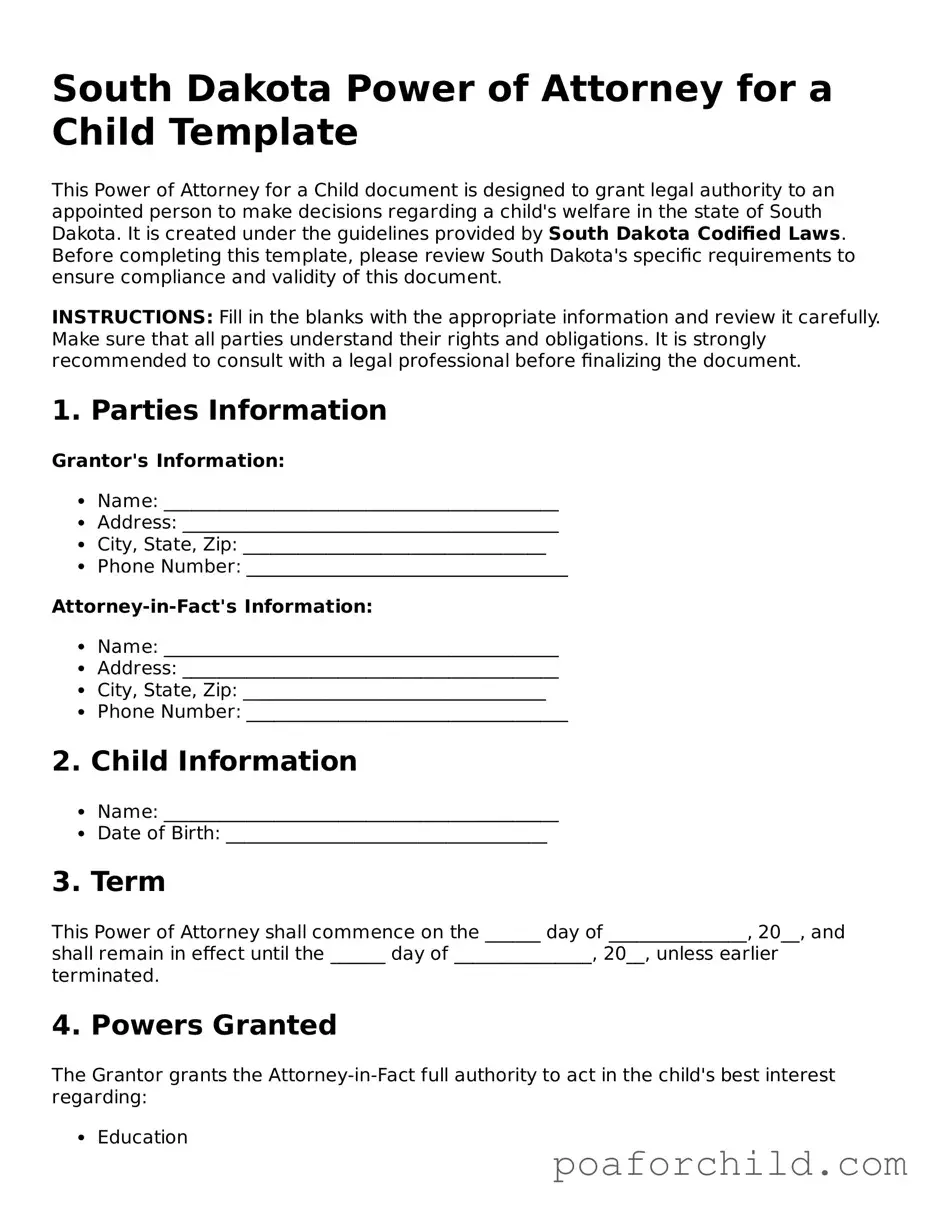Detailed Guide for Using South Dakota Power of Attorney for a Child
In the State of South Dakota, establishing a Power of Attorney (POA) for a child allows a parent or guardian to grant temporary decision-making authority to another adult. This authority can cover a broad range of responsibilities, including healthcare decisions and educational matters. The process of filling out a Power of Attorney for a Child form is straightforward, but it requires careful attention to detail to ensure that the document accurately reflects the wishes of the parent or guardian and is legally valid. Follow these step-by-step instructions to complete the form.
- Begin by entering the date at the top of the form. This indicates the day that the POA will become effective.
- Fill in the full legal names of the parent(s) or current legal guardian(s) granting the Power of Attorney in the designated section. If the form provides separate spaces for each parent or guardian's information, be sure to complete each one as required.
- Insert the full legal name of the individual being granted the Power of Attorney. This is the person who will temporarily assume decision-making authority for the child.
- Specify the full legal name of the child who the Power of Attorney will pertain to. In cases where there are multiple children involved, each child may require a separate form unless the document indicates otherwise.
- Detail the specific powers being granted. This section allows you to list the types of decisions that the appointed individual will have the authority to make on behalf of the child. It is important to be as clear and comprehensive as possible.
- State the duration for which the Power of Attorney is valid. South Dakota law may limit the maximum duration of a Power of Attorney for a child, so it is advisable to confirm any such restrictions. Unless a specific expiration date is mentioned, the POA may be considered effective indefinitely or until legally revoked.
- Include the contact information for both the grantor(s) (the parent or legal guardian) and the grantee (the person granted the POA), such as addresses and phone numbers. This ensures that all parties can be easily reached if necessary.
- Both the granting party (or parties) and the individual receiving the Power of Attorney must sign and date the form in the presence of a notary public. Some forms may also require a witness signature in addition to notarization.
- Finally, have the form notarized. The notary public will complete their section of the document, confirming the identities of all signing parties and the voluntariness of their actions.
Completing the Power of Attorney for a Child form is an important step for ensuring that a trusted individual can make necessary decisions on behalf of a child when the parent or legal guardian is unavailable to do so. Once the form is fully completed and properly notarized, it serves as a legal document granting temporary authority as outlined within the text. It’s important for all parties involved to retain copies of the signed document for their records and to review the terms periodically to ensure they still meet the child's and the family's needs.
